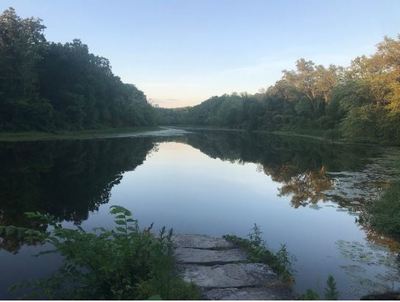Assessing the Environmental and Social Impacts of the Columbia Lake Dam Removal
- Student
- Kyle Walker
- College(s)
- College of Science
- Faculty Advisor
- Dom Chaloner
- Class Year
- 2021

Dam removal is increasingly used as a common approach to river restoration. The impact of restoration efforts on environmental conditions is often monitored but rarely is this extended to the social impacts, even though they are recognized as an important outcome of resource management actions.
To study both the environmental and social dimensions of dam removal, I used the Columbia Lake Dam as a case study. Removal of a 5.5-meter hydropower dam, located in the Paulins Kill River in Columbia, NJ, was completed in 2019 as part of a greater restoration initiative in the Paulins Kill watershed organized by The Nature Conservancy (TNC) and New Jersey Department of Environmental Protection (NJDEP). The goal of the dam removal was to enhance river health for native species and improve spawning grounds for anadromous fish.
I considered whether dam removal had altered both the environmental and social value of the river by examining changes in water quality data while also surveying public perception of these changes. Water quality data analyzed included 24-hour maximum, minimum, and mean for both temperature (°C) and dissolved oxygen concentrations (mg/L), collected by TNC over three seven-day periods (June, August, October) in both 2017 (before dam removal) and 2019 (after dam removal). To understand social impacts, I distributed an online survey to recreational users of the Paulins Kill that asked about perceptions of the Columbia Lake Dam removal, focusing on changes in water quality, fish habitat, and recreational experiences.
I found that water temperature was not altered by dam removal (p>0.05) while dissolved oxygen increased in the impounded area by an average of 2.2 mg/L (p=0.035) following removal. The public held generally positive perceptions of dam removal, with between 52-54% indicating positive responses for water quality, fish habitat, and recreational changes. This showed a disconnect from the absence of large-scale water quality changes. This study specifically enabled TNC, NJDEP, and other stakeholders to better understand both the social and environmental outcomes of the Paulins Kill River Restoration Project, and also improved the broader knowledge of the many consequences of dam removal.